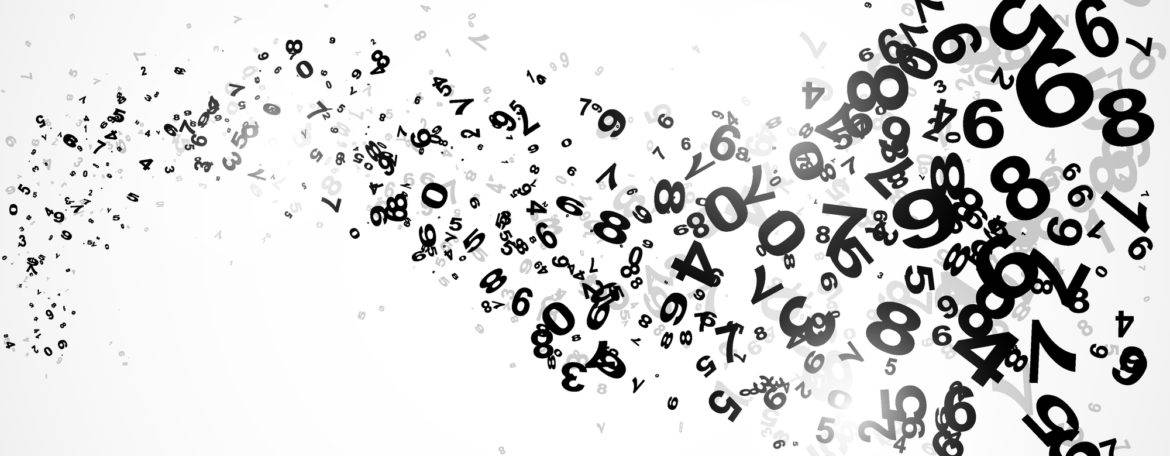If you’re like most professional writers, you avoid any math more complicated than balancing your checkbook. You might not even do that anymore, since you can just check your bank balance on your phone. A math-free life—how great is that?
In some cases, however, you may incorporate numbers or mathematics into your writing—in scientific or technical writing, of course, but also in business writing or general nonfiction. When writing for a specific publication, there will may be a house style guide that has detailed rules around writing numbers and equations. If you are operating without such guidance, here are some rules common to many style guides that will help you maintain your (and your readership’s) sanity.
General Numbers
- When to spell out numbers: Opinions vary on this subject, but a good rule is that whole numbers from zero (0) to ten (10) are spelled out in text. Whole numbers greater than ten are expressed as numerals (such as “26”). However, if you are comparing two numbers in the same sentence, use the same format (“There were 7 dogs and 11 wombats in the room”).
- Negative numbers: All negative numbers should use numerals (such as “−6”). Use the “minus sign” symbol (−) instead of the hyphen (-). In Microsoft Word, the minus sign can be found in the Symbol dialog box (Insert > Symbol) in the subset Mathematical Operators.
- Non-integers: These are expressed either as decimals (such as “4.363”) or fractions (“2½”). Don’t mix the two in the same piece – if you have decimals anywhere, use them for all non-integers (“2.5” instead of “2½”).
- Numbers 1,000 or greater: Use the comma to separate each group of three places, such as “23,685.” For very large numbers, spell out “million” or “billion,” such as “16 billion.” An exception is when the exact amount of a large number is important (such as “23,439,119.24”).
- Ranges: When discussing ranges of numbers, use either the “en dash” (–) or spell out “to” or “through” (“12–27,” “12 to 27,” or “12 through 27”). The en dash looks a good deal like a minus sign, so if there are negative numbers or equations involved, it’s often best to use “to” or “through” instead. (Pro tip: An en dash (–) is a bit longer than a hyphen (-). A little-known keyboard shortcut for the en dash in MS Word is pressing Ctrl and the “-“ key in the number pad).
- Money:The same rules above apply, except you need a currency symbol. When discussing U.S. dollars with a U.S. audience, you should use the dollar symbol (“$87.23,” “$12 million”). For international audiences, or if you are discussing amounts in different currencies, you can use symbols (£, €, ¥), but abbreviations are becoming more common(“USD 19.95,” “EUR 56 billion”).
- Units: When discussing physical quantities, separate the number from its unit with a space, such as (“11 km” or “23.3 gallons”). Exceptions: percentages (“45%”) and degrees of a circle (“90°”). Speaking of degrees: Use the degree symbol (°) – don’t fabricate one from a superscript “o.”
Equations
- In-line vs. display: Simple equations, such as “a2 + b2 = c2,” can usually be incorporated in-line in text. For more complex equations, you should create a display equation (separated from the text) using an equation editor, such as the one built in to recent versions of Microsoft Word.
- Operators: Addition (+) and subtraction (−, the minus sign) operators are separated from their operands by a space on each side (“87 + 13,” not “87+13”). Equality (=) and inequality (<, >) symbols also have a space on each side. Multiplication (×, ∙) and division (÷, /) do not have spaces around them. (For multiplication, use a multiplication symbol, not a lowercase “x.”)
- Variables:, Variables, whether expressed in Greek or Latin letters, are italicized (n, x, θ). If these have subscripts or superscripts associated with them, the subscripts/superscripts are not This may vary from one scientific discipline to another, so check with a subject matter expert.
There is much more that could be said about incorporating mathematics and numbers into your writing—some scientific journals devote pages and pages in their style guides to the subject. However, these guidelines should cover most cases you will run into. Use them in your prose, and your writing will always be greater than the competition’s.
Morris Vaughan is a technical writing consultant in Los Angeles, California.




